These Japanese cold soba noodles with a rich, umami dipping sauce is the perfect refreshing meal for hot summer days. Make this meal in less than 15 minutes with a quick dashi stock that does not compromise on flavor! It’s a perfect to pair with vegetable and shrimp tempura for a light lunch.
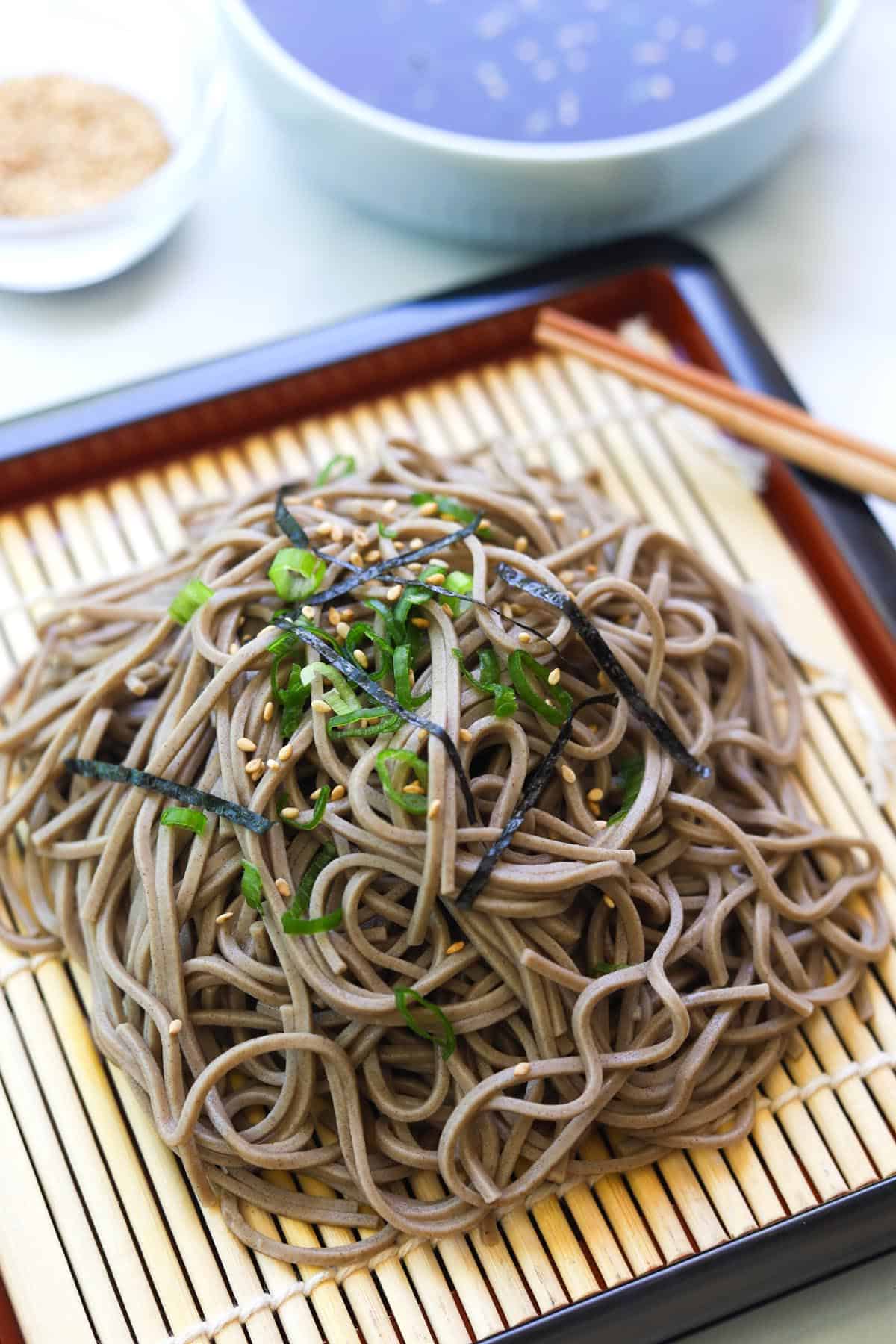
During hot summer days, I'm all about quick and easy meals like these onigiri rice triangles and zaru soba with the most flavorful and balanced dipping sauce! I was introduced to these noodles way back when I used to live in the heart of Los Angeles, where authentic and delicious Japanese restaurants are a-plenty.
Soba means buckwheat in Japanese and zaru is a strainer usually made of bamboo. Essentially these buckwheat noodles are served on a strainer. This recipe uses a dashi powdered stock as the base for the dipping sauce. It’s a quick and convenient way to get dashi broth when you’re short on time. Follow the instructions below on how to make this refreshing and delicious noodles!
Jump to:
Ingredients & Notes

Soba noodles - There are several types of soba noodles, most of them are a blend of buckwheat and wheat flour. You can get them at a Japanese market or most Asian markets.
Soba Dipping Sauce - Made from just 3 easy ingredients: The dashi broth, soy sauce and mirin. I use this HonDashi brand for the dashi seasoning powder, which is fairly inexpensive and found at most Asian markets. There are other types of dashi stock powder that are more expensive, and offer a more refined flavor.
For both the soy sauce and mirin, you can get them at most American or Asian grocery stores. I use Kikkoman soy sauce and mirin is a Japanese rice wine that adds sweetness to the sauce.

Optional Condiments - The condiments are added to the dipping sauce for additional flavor. Scallions, wasabi, seaweed, and grated daikon radish are some great options.
Zaru Soba Noodle Tray - I got this bamboo mat with a tray at my local Japanese store. It helps to drain the water from the noodles.
Instructions

1). Make the soba noodles by boiling them for the recommended time on the package. Mine took about 5 minutes. The noodles should not be al dente or mushy, but just soft enough. Make sure to taste them before straining.
2). Rinse the cooked noodles under cold water, which stops the cooking process and helps prevent them from sticking.

3). Give the buckwheat noodles a nice ice bath, this is a must to get the noodles nice and chilled!
4). Make the sauce by adding all the ingredients into a sauce pan and bringing it to a boil. You can then let the sauce cool to room temperature, or place it in the fridge for a quicker cool down.
Pro Tips
- To serve, portion out the noodles and place them on a zaru mat (if you don’t have one, make sure to drain the noodles really well with a strainer). Portion the sauce in a small bowl and serve on the side.
- To eat, add optional condiments to the dipping sauce. Take some noodles and dip it into the sauce and enjoy it with a nice slurp!
- You can store the noodles for up to 3 days and the sauce in an airtight container for up to 3 to 4 days.
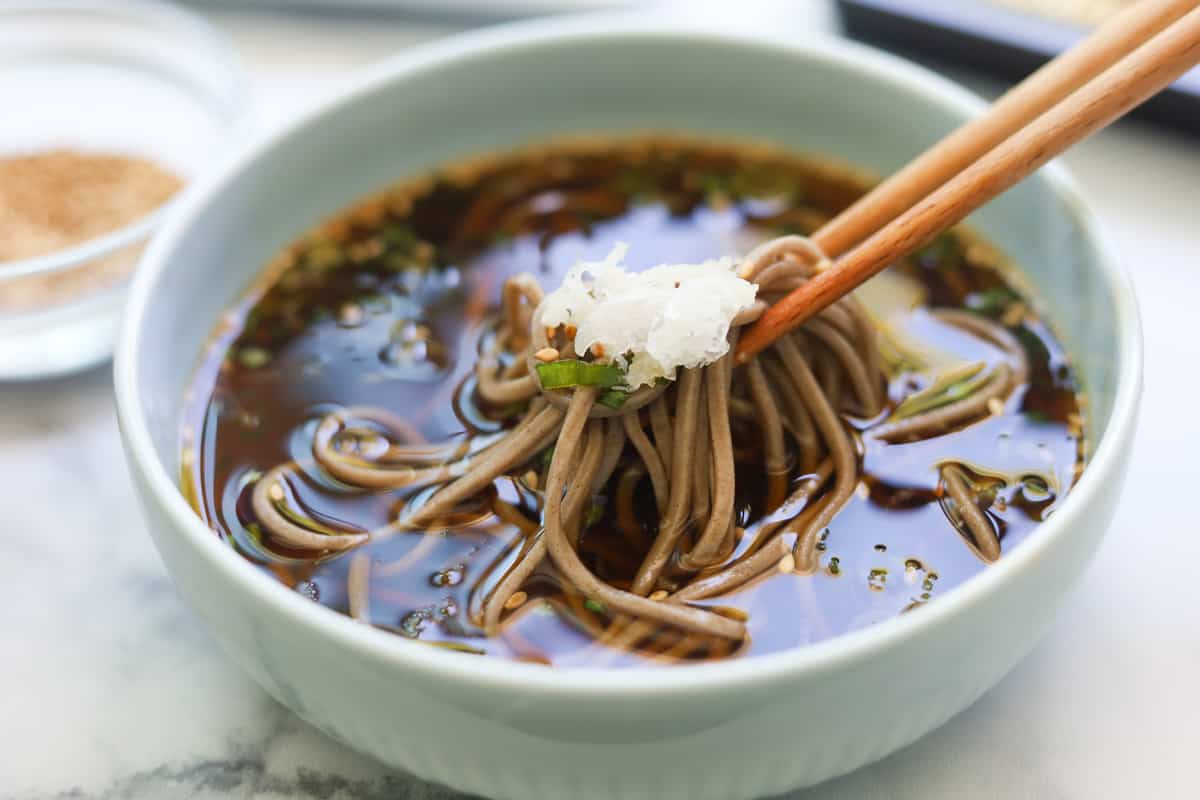
Frequently Asked Questions
Soba noodles need to be washed with cold water right after they’re cooked to prevent them from sticking.
Soba can be served hot or cold. Here we are making a cold noodle dish, which needs to be chilled in an ice bath. Usually when they are served hot, it’s in a hot broth.
This dish is delicious by itself, or you can serve it with a side of vegetable or shrimp tempura, or karaage (Japanese fried chicken).
There is no need to salt the water for soba noodles. The dipping salt provides enough salt and flavor to the dish.
More Easy Asian Recipes to Enjoy
Love a recipe you've tried? Please leave a 5-star 🌟rating in the recipe card and a comment below! That'll make my day!
Let's be friends! Follow me on social media @ Instagram, Pinterest. Give me a tag @apeachyplate when you try out a recipe!
Cold (Zaru) Soba Noodles with Dipping Sauce
Ingredients
- 8 ounces dried soba (buckwheat noodles) half 16 ounce package
Cold Soba Dipping Sauce
- 1 cup dashi stock For the HonDashi stock brand, add 1 teaspoon seasoning to 1 cup of water. Follow instructions on how to make the dashi broth based on the brand you get.
- ¼ cup mirin
- ¼ cup soy sauce
Optional toppings
- scallions, thinly sliced
- nori (seaweed), cut into small thin pices.
- daikon, grated
- sesame seeds
- wasabi
Instructions
- Boil the noodles per the recommended time on package. Usually about 5 minutes.
- Rinse the cooked noodles in a strainer under cold water.
- Submerge the noodles in a big bowl with cold water and ice. Set aside until ready to serve.
- Make the dipping sauce. Add dashi stock, mirin and soy sauce into a small sauce pan and take it to a boil on medium heat, about 5 minutes.
- Turn off the heat, let the sauce cool to room temperature or place it in the refrigerator for a quicker cool down.
- To serve, portion out the noodles and place them on a Zaru mat (if you don’t have one, make sure to drain the noodles really well with a strainer). Portion the sauce in a small bowl and serve on the side.
- To eat, add optional condiments to the dipping sauce. Take some noodles and dip it into the sauce and enjoy it with a nice slurp!
Notes
- The condiments are added to the dipping sauce for additional flavor. Scallions, wasabi, seaweed, and grated daikon radish are some great options.
- This dish is delicious by itself, or you can serve it with a side of vegetable or shrimp tempura, or karaage (Japanese fried chicken).
- You can store the noodles for up to 3 days and the sauce in an airtight container for up to 3 to 4 days.






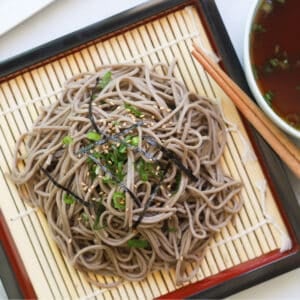

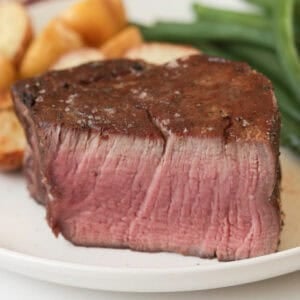

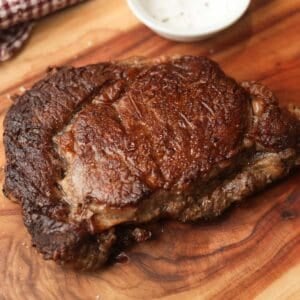


Leave a Reply